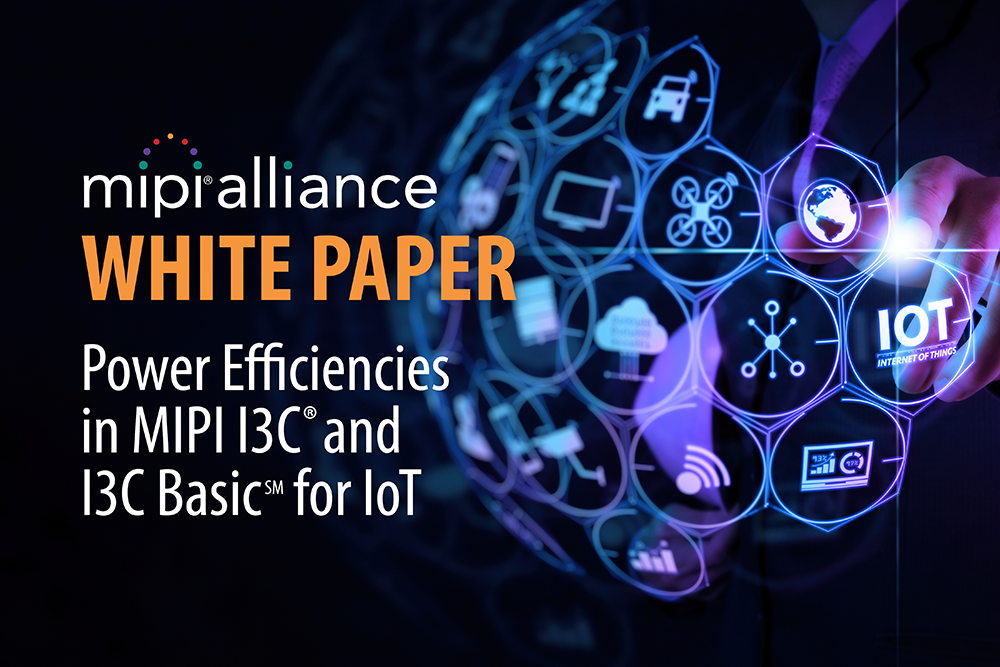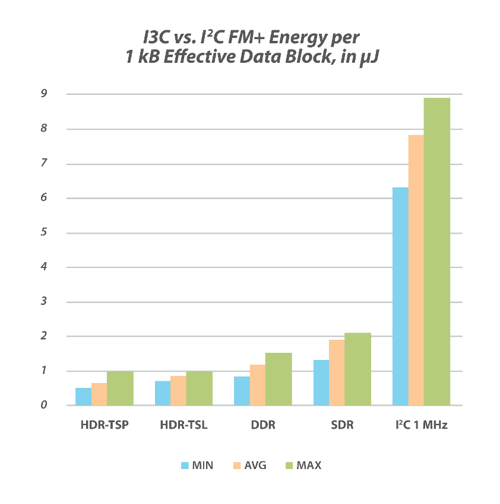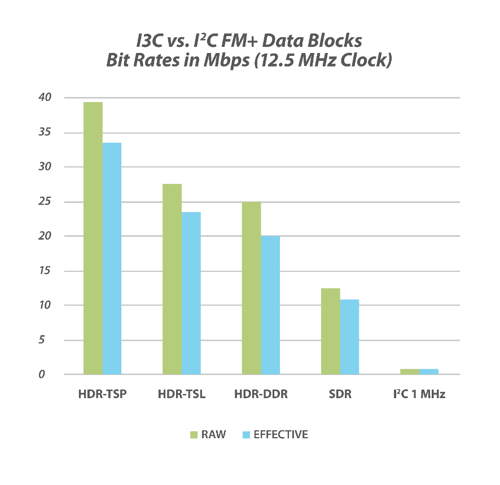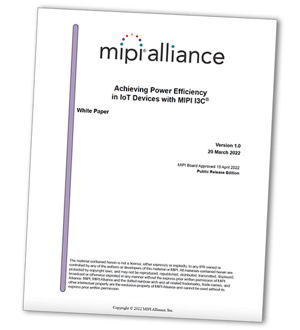3 min read
White Paper Outlines Breakthrough IoT Power Efficiencies Available with MIPI I3C/I3C Basic
![]() Michele Scarlatella, MIPI Alliance IoT Technical Consultant
:
7 March 2023
Michele Scarlatella, MIPI Alliance IoT Technical Consultant
:
7 March 2023

- News & Events
- News
- Blog
As broad and varied as the IoT product spectrum may be, a critical attribute shared by a vast majority of these devices is the absolute need for power efficiency.
Many devices rely on rechargeable batteries, while others have non-rechargeable batteries that are often hard to replace. For devices that use movement or have temperature sensors, even tiny improvements in energy efficiency can add up to substantial savings over the lifetime of the device.
This need for power efficiency makes the remarkable energy improvements that can be achieved via the MIPI I3C® bus interface transformational, potentially rendering a range of IoT applications significantly more practical to implement.
The MIPI white paper, “Achieving Power Efficiency in IoT Devices with MIPI I3C,” published in 2022, helps IoT product architects and designers gain a greater understanding of how to leverage MIPI I3C and I3C Basic℠ to dramatically reduce energy consumption, even while still delivering superior performance.
Specifically Engineered for Very Low Power Consumption
MIPI I3C is a scalable, intelligent utility and control bus interface for connecting peripherals to an application processor or to a microcontroller, giving developers unprecedented opportunities to craft innovative designs for an array of products, including smartphones, wearables, systems in automobiles and other devices, in addition to the IoT.
Designed as the successor to I2C, MIPI I3C incorporates key attributes of the I2C and SPI interfaces to provide a high-performance, very-low-power solution with backward compatibility and a robust, flexible upgrade path. I3C is available to MIPI members, while I3C Basic is a rich subset that bundles together the most commonly needed features in a publicly available, royalty-free version for developers and other standards organizations.
MIPI I3C provides the technical attributes intended to support the key design goals of its targeted markets: scalable performance, low power consumption, and low EMI (electromagnetic interference). For instance, I3C reduces the energy consumption required to transfer 1 kilobyte by about five to 18 times compared with legacy I2C (see Figure 1 below). It also supports a data rate of up to 11 Mbps using its simplest mode of operation and includes options for higher-performance, high-data-rate modes that can provide speeds in excess of 30 Mbps in single-lane mode (see Figure 2 below), allowing for these high speeds without sacrificing a low-power design.
 |
| Figure 1: Energy (μJ) consumed for an effective single lane of 1 kB block of data for the I3C modes compared with I2C FM+ (1 MHz) |
 |
| Figure 2: Raw and effective single-lane bit rates of the I3C modes compared with I2C FM+ (1 MHz). |
Although I3C is still relatively new, introduced in late 2016, the combination of its efficiency and performance with the growth of the IoT industry is encouraging greater availability of I3C and I3C Basic commercial intellectual property (IP) in multiple configurations and options. At the same time, MIPI has continued to introduce supporting specifications and other tools, including a Transfer Command Response Interface (MIPI TCRI℠), a host controller interface (MIPI I3C HCI℠) and a Linux HCI kernel driver–providing I3C developers with a fast track for their designs.
Energy Efficiencies Especially Relevant for IoT
Devices that rely on sensors have always posed power challenges because those sensors must be continuously interrogated, with each cycle between sensor and processor demanding energy. I2C, for instance, works by "polling," or constantly checking and rechecking sensor readings and requiring the entire system to be powered throughout the process. Alternatively, an extra wire can be employed, an added complexity not always available on sensors. With I3C/I3C Basic, however, in-band interrupts can "wake up" the system only in the case of an event that needs servicing.
The intelligence, versatility and flexibility of I3C work together to convey substantial power efficiency in other novel ways as well. For example, a security camera might utilize IEEE 802.11 Wi-Fi to continuously deliver high-resolution, full-color footage, demanding significant energy throughout the system. However, using the MIPI CSI-2® v4.0 camera interface running over I3C/I3C Basic, the Always-On Sentinel Conduit feature can be implemented, allowing the camera to use black-and-white mode and transfer images of reduced resolution over lower data speeds. Then, when an event such as motion is detected, the infrared LEDs and other system elements can be powered up to deliver the required higher-quality images.
Features Covered in the White Paper
 The “Achieving Power Efficiency in IoT Devices with MIPI I3C” white paper offers an in-depth examination of selected technical features that work together to offer these key attributes to IoT designers, including routing functions, bus activity state management, in-band interrupts (IBIs), hot-join (HJ) and device-to-device tunneling (D2DT).
The “Achieving Power Efficiency in IoT Devices with MIPI I3C” white paper offers an in-depth examination of selected technical features that work together to offer these key attributes to IoT designers, including routing functions, bus activity state management, in-band interrupts (IBIs), hot-join (HJ) and device-to-device tunneling (D2DT).
It also describes the various ways that I3C has been engineered to optimize energy and power efficiency. Detailed in the paper are sections that provide an overview of these areas, including:
- Bus electrical characteristics
- Handling of synchronous and asynchronous events
- Selective power management of subcomponents
- System segmentation
To learn more about how the power efficiencies of I3C are particularly aligned with the needs of IoT designers, download the MIPI Alliance white paper.
A companion webinar that focuses on the electrical properties of the MIPI bus and provides examples of specific architectural configurations not possible with similar legacy communication buses also is available on demand.






